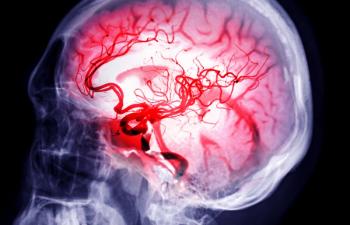
- December 2017 Heart Health
- Volume 83
- Issue 12
Oral Anticoagulants and NSAIDs, SSRIs, or SNRIs
In addition to their anti-inflammatory and analgesic activity, NSAIDs that inhibit cyclooxygenase-1 reversibly inhibit platelet aggregation and reduce the ability of the stomach lining to prevent ulceration.
Previous columns have summarized the potential pharmacokinetic interactions between oral anticoagulants (OACs) (eg, warfarin, apixaban, betrixaban, dabigatran, edoxaban, and rivaroxaban) and drugs that alter their elimination. OACs are also susceptible to pharmacodynamic interactions with drugs that alter their pharmacologic response. The co-administration of other anticoagulants, such as heparin or drugs designed to inhibit platelet aggregation (eg, clopidogrel, prasugrel, and low-dose aspirin), is known to increase the risk of clinically significant bleeding episodes. Combining OACs and drugs that have antiplatelet activity (eg, nonsteroidal anti-inflammatory drugs [NSAIDs], selective serotonin reuptake inhibitors [SSRIs], and serotonin and norepinephrine inhibitors [SNRIs]) as an adverse effect has also been shown to increase the risk of bleeding. These interactions are summarized below.
Nonsteroidal Anti-inflammatory Drugs
In addition to their anti-inflammatory and analgesic activity, NSAIDs that inhibit cyclooxygenase-1 reversibly inhibit platelet aggregation and reduce the ability of the stomach lining to prevent ulceration. If bleeding in the gastrointestinal (GI) tract or elsewhere in the body occurs in a patient taking an OAC, it may be more severe in patients who are also taking drugs that inhibit platelet aggregation. One of the first reports of the effect of NSAIDs on bleeding risk with OACs noted a 3.7-fold increased risk of GI bleeding.1 Others have reported a similar increased risk of GI bleeding associated with NSAIDs.2-4 The risk of bleeding in patients simultaneously taking OACs and NSAIDs has been noted to increase if additional drugs associated with GI bleeding (eg, systemic corticosteroids, aldosterone antagonists, and SSRIs) are co-administered.3,5 Conversely, the co-administration of gastric acid suppressants, such as proton pump inhibitors, is associated with a reduced risk of GI bleeding.2
The management of patients receiving NSAIDs and OACs depends on several risk-modifying factors. As noted above, the co-administration of other drugs can increase or decrease the risk of GI bleeding. In addition, patients with a prior history of GI bleeding are likely to be at increased risk, as are chronically ill patients who take NSAIDs, compared with those using NSAIDs as needed. The use of topical NSAIDs is not considered to increase the risk of bleeding. The risk of combining OACs plus NSAIDs should be discussed with all patients; however, those with additional risk factors should be counseled in more detail.
Selective Serotonin Reuptake Inhibitors and Serotonin Norepinephrine Reuptake Inhibitors
Antidepressants belonging to the SSRI and SNRI classes inhibit platelet aggregation by decreasing the uptake of serotonin by platelets. They are not associated with an increased risk of GI ulceration. The administration of SSRIs and SNRIs with OACs increases the risk of bleeding by 2- to 3-fold.2-4 There are insufficient data to discern the relative risk for bleeding episodes between these classes. Factors similar to those noted above for NSAID-OAC interactions increase the risk of bleeding in patients taking OACs and these antidepressants.3,5-7 Unlike bleeds associated with NSAIDs and OACs, however, antidepressant-OAC bleeds are not excessively GI related.
Because antidepressants tend to be administered on a long-term basis and gastro-protective drugs are unlikely to reduce the risk of bleeding, it is difficult to identify a subset of patients who are at lower risk of bleeding. Antidepressants that do not affect serotonin reuptake do not appear to increase the risk of bleeding with OACs and could be considered as alternatives.
Summary
Although most of the data on bleeding risk with OACs are on warfarin, one should assume similar risks are associated with non-vitamin K antagonist anticoagulants. Knowledge of factors that increase or mitigate the risk of an interaction is important when evaluating patients. Pharmacists should be particularly watchful for patients with risk factors who should be considered for alternative therapy. Patients who are exposed to NSAIDs, SSRIs, or SNRIs in addition to OACs should be counseled to report any evidence of bleeding to their health care practitioners.
John R. Horn, PharmD, FCCP, and Philip D. Hansten, PharmD are both professors of pharmacy at the University of Washington School of Pharmacy. For an electronic version of this article, including references, visit hanstenandhorn.com.
References
- de Abajo FJ, Rodríguez LA, Montero D. Association between selective serotonin reuptake inhibitors and upper gastrointestinal bleeding: population based case-control study. BMJ. 1999;319(7217):1106-1109.
- de Abajo FJ, García-Rodríguez LA. Risk of upper gastrointestinal tract bleeding associated with selective serotonin reuptake inhibitors and venlafaxine therapy. Arch Gen Psychiatry. 2008;65(7):795-803. doi: 10.1001/archpsyc.65.7.795.
- Masclee GM, Valkhoff VE, Coloma PM, et al. Risk of upper gastrointestinal bleeding from different drug combinations. Gastroenterology. 2014;147(4):784-792.e9. doi: 10.1053/j.gastro.2014.06.007.
- Vitry AI, Roughead EE, Ramsay EN, et al. Major bleeding risk associated with warfarin and co-medications in the elderly population. Pharmacoepidemiol Drug Saf. 2011;20(10):1057-1063.
- Loke YK, Trivedi AN, Singh S. Meta-analysis: gastrointestinal bleeding due to interaction between selective serotonin uptake inhibitors and non-steroidal anti-inflammatory drugs. Aliment Pharmacol Ther. 2008;27(1):31-40.
- Schalekamp T, Klungel OH, Souverein PC, de Boer A. Increased bleeding risk with concurrent use of selective serotonin reuptake inhibitors and coumarins. Arch Intern Med. 2008;168(2):180-185. doi: 10.1001/archinternmed.2007.32.
- Cochran KA, Cavallari LH, Shapiro NL, Bishop JR. Bleeding incidence with concomitant use of antidepressants and warfarin. Ther Drug Monit. 2011;33(4):433-438. doi: 10.1097/FTD.0b013e318224996e.
Articles in this issue
almost 8 years ago
Chicago Acts to Address Pharmacist Workload and Patient Safetyalmost 8 years ago
Departing PTCB Director Reflects on Evolving Technician Rolesalmost 8 years ago
Generic Products (December 2017)almost 8 years ago
Case Studies (December 2017)almost 8 years ago
Can You Read These Rxs? (December 2017)almost 8 years ago
Rx Products (December 2017)almost 8 years ago
A Change of Heart: How Brown Bagging Can Bring Clarityalmost 8 years ago
Pharmacist Takes Plea Deal in Billing Fraud Casealmost 8 years ago
A Good Start: President Trump and the Opioid Abuse Crisisalmost 8 years ago
KevzaraNewsletter
Stay informed on drug updates, treatment guidelines, and pharmacy practice trends—subscribe to Pharmacy Times for weekly clinical insights.


















































































































































































































